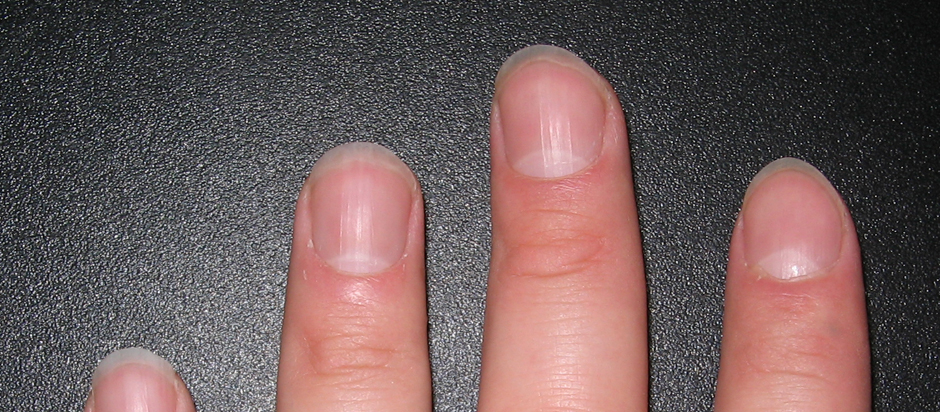There is a wealth of information at our fingertips – in our nails. Anyone who has ever wished for some kind of health-o-meter to signal the body’s state of wellness need look no further than the ends of their own digits, where signs of diseases past, present and future are visible.
A question that often comes up is why fingernails have ridges (parallel lines) running in the direction of nail growth, from the cuticle to the tip of the nail. It turns out that such longitudinal ridges (like some other nail anomalies) are usually benign nail artifacts, probably a manifestation of the nail’s structure: the nail bed, on which the nail rests and to which the nail is attached, is arranged in parallel ridges running in the direction of nail growth. The vertical ridges become more visible with increasing age, so if they become more prominent over time it’s likely nothing to worry about (unless one finds reminders of advancing age deeply troubling). However, there are other signs of disease visible in finger- and toenails that warrant more serious attention.
Nail discolorations are a common sign of disease: abnormally white fingernails may be due to anemia or kidney problems, deep blue nail beds signal pulmonary obstruction or emphysema, and yellow nails, while often a result of tobacco staining, may suggest liver problems, diabetes, respiratory disorders, problems with the lymphatic system, renal disease, syphilis, cancer or exposure to toxins
Because the nails are connected to the skin (constituting part of the body’s external covering), they are subject to certain dermatological conditions such as psoriasis and fungal infections. However, some anomalies in nail shape or texture are signs of internal problems: abnormally thick nails may indicate that blood is not circulating properly in the vascular system and spoon-shaped nails (a condition called koilonychias from the Greek ‘koilo’ for spoon) may result from vitamin B12 deficiency, which, along with thyroid problems, impaired kidneys and problems with circulation, can also make nails brittle. Very ‘bendable’ nails may be a sign of rheumatoid arthritis.
There are many other signs and symptoms of disease that crop up in nails, but nails reveal information beyond clues about current health and general grooming practices; if a person has suffered from a serious disease or a physical or emotional trauma, evidence may show up in their nails. Considering the relatively small amount of tissue implicated, nail growth requires a lot of metabolic energy. Because of this, the nail-production system is very sensitive to happenings in other bodily systems. Thus, serious illness and physical or emotional trauma can hinder or even fully arrest nail growth, resulting in horizontal ridges in the nail (called Beau’s lines) marking the period of disease. Beau’s lines become visible as the nail grows out, and the approximate timing of the illness/trauma that caused the lines may be calculated from their ‘height’ in the nail: it can take three to six months to grow a fingernail and a year to a year and a half to grow a toenail, so a Beau’s line half-way up the nail indicates a trauma or disease that occurred a few months before.
Since nails can be such an important source of health information, it is important to take good care of them (not to mention that there’s nothing more elegant than a well- manicured hand). To help in keeping nails in tip-top health-reporting shape, note the following dos and don’ts, facts and myths:
- It is not true that eating gelatin will make nails grow faster or stronger; even though nails may show signs of vitamin/nutrient deficiency, nothing beyond a healthy, balanced diet can positively influence nail health.
- It is true that nails are about 100 times more permeable to water than the outer layer of skin, so that nails swell whenever wet and shrink again as they dry. Too much swelling-shrinking due to moisture can weaken nails, so use rubber gloves to keep hands dry whenever cleaning or doing dishes, and moisturize nails and cuticles regularly.
- Nail polish and nail polish remover should be used sparingly. Nail polish can dry out nails or keep them from ‘breathing,’ and polish removers can be extremely drying to nails and may contain formaldehyde resin – an allergen definitely to be avoided.







